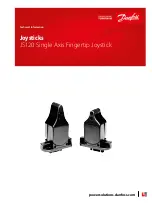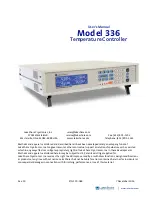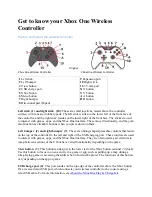
Protection and Features
•
Electronic thermal motor protection against
overload.
•
Temperature monitoring of the heatsink ensures
that the frequency converter trips, if the
temperature reaches 95
°
C ± 5
°
C. An overload
temperature cannot be reset until the
temperature of the heatsink is below 70
°
C ± 5
°
C (Guideline - these temperatures may vary for
different power sizes, enclosures etc.). The has an
auto derating function to avoid it's heatsink
reaching 95
°
C.
•
The frequency converter is protected against
short circuits on motor terminals U, V, W.
•
If a mains phase is missing, the frequency
converter trips or issues a warning (depending on
the load).
•
Monitoring of the intermediate circuit voltage
ensures that the frequency converter trips, if the
intermediate circuit voltage is too low or too
high.
•
The frequency converter is protected against
earth faults on motor terminals U, V, W.
9.3 Efficiency
Efficiency of the frequency converter (η
VLT
)
The load on the frequency converter has little effect on its
efficiency. In general, the efficiency is the same at the
rated motor frequency f
M,N
, even if the motor supplies
100% of the rated shaft torque or only 75%, i.e. in case of
part loads.
This also means that the efficiency of the frequency
converter does not change even if other U/f characteristics
are chosen.
However, the U/f characteristics influence the efficiency of
the motor.
The efficiency declines a little when the switching
frequency is set to a value of above 5 kHz. The efficiency
will also be slightly reduced if the mains voltage is 480V.
Frequency converter efficiency calculation
Calculate the efficiency of the frequency converter at
different loads based on
. The factor in this
graph must be multiplied with the specific efficiency factor
listed in the specification tables:
1.0
0.99
0.98
0.97
0.96
0.95
0.93
0.92
0%
50%
100%
200%
0.94
Rela
tiv
e Efficienc
y
130BB252.11
1.01
150%
% Speed
100% load 75% load 50% load 25% load
Illustration 9.2 Typical Efficiency Curves
Example: Assume a 22 kW, 380-480V AC frequency
converter runs at 25% load at 50% speed. The graph
shows 0.97 - rated efficiency for a 22 kW FC is 0.98. The
actual efficiency is then: 0.97x0.98=0.95.
Efficiency of the motor (η
MOTOR
)
The efficiency of a motor connected to the frequency
converter depends on the magnetizing level. In general,
the efficiency is just as good as with mains operation. The
efficiency of the motor depends on the type of motor.
In the range of 75-100% of the rated torque, the efficiency
of the motor is practically constant, both when it is
controlled by the frequency converter and when it runs
directly on mains.
In small motors, the influence from the U/f characteristic
on efficiency is marginal. However, in motors from 11 kW
and up, the advantages are significant.
In general, the switching frequency does not affect the
efficiency of small motors. Motors from 11 kW and up have
their efficiency improved (1-2%). This is because the sine
shape of the motor current is almost perfect at high
switching frequency.
Efficiency of the system (
η
SYSTEM
)
To calculate the system efficiency, the efficiency of the
frequency converter (η
VLT
) is multiplied by the efficiency of
the motor (
η
MOTOR
):
η
SYSTEM
=
η
VLT
x
η
MOTOR
9.4 Acoustic Noise
The acoustic noise from the frequency converter
originates from 3 sources:
•
DC intermediate circuit coils.
•
Integral fan.
•
RFI filter choke.
The typical values measured at a distance of 1 m from the
unit:
General Specifications and ...
Design Guide
160
Danfoss A/S © Rev. 06/2014 All rights reserved.
MG11BC02
9
9
















































